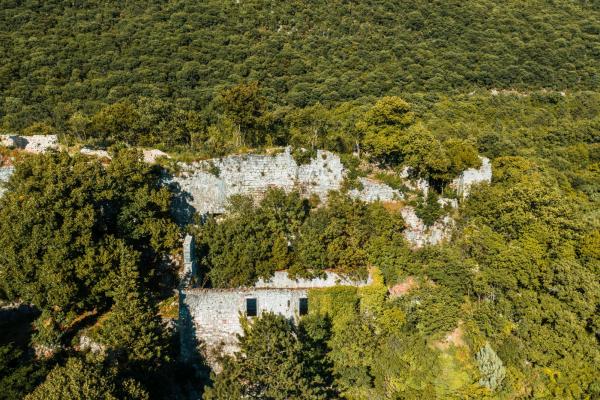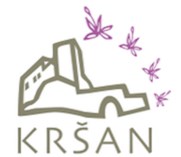Kaštel Kožljak
Kaštel Kožljak

Like this article?
Recommend it to your friends through these services..
Kožljak is located on the western slopes of the Učka Mountain, next to Čepić field. Kožljak Castle is on a steep cliff 184 metres above sea level on the road that once connected Istria and Liburnia. The castle was built on the site of an old prehistoric fortress, and its first owners called it Cosilaco or de Wachsenstein and ruled it until 1323. It was first mentioned in written sources as Castrum Josilach in 1102.
The Counts of Gorica ruled it from 1323 to 1325, when it was donated to Count Hugo III Devinski to settle Countess Beatrice’s debts. The most famous owners of the castle are considered to be the Nikolić and Moyses families. During the rule of the Moyses family, the territory of Kožljak extended to Veprinac commune and Boljun field and included Brdo, Grobnik, Posert, Letaj, Šušnjevica and Nova Vas.
There is a legend associated with the feudal lord Nikolić that he was a horse lover and that he buried his favourite horse with the honours of a Christian funeral, and supposedly church bells also rang. During the short siege of Venice in the 16th century, the Venetian Barbo family lived in the castle, which converted to Protestantism during the Reformation and hosted prominent preachers and writers in the castle, thereby helping Protestants until the Church expelled them and condemned them to the mercy of the Inquisition.
Due to the fact that the lords of Kožljak also supported the Uskoks, Venice ravaged the lordship's possessions several times in 1612 and 1614. The castle was successfully defended during the Uskok War, but it soon became unusable for modern warfare and uncomfortable for life. The Barbo family had already built a new residence, Belaj castle, and left Kožljak. The castle consisted of two parts, residential and economic, and had a smaller space for fairs and trade occasions. It was surrounded by defensive walls with two semi-circular towers, and within the walls was the Romanesque St. Hadrian's church. It is especially interesting that there is a preserved prison in Kožljak castle and it is an exceptional example of a medieval castle in Istria.
